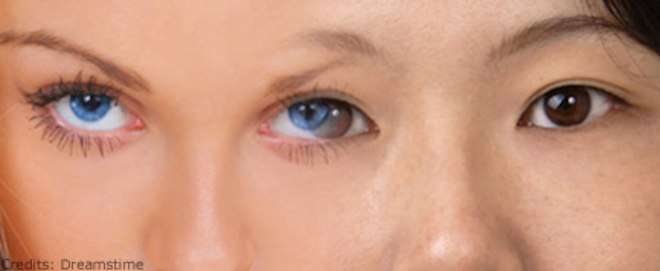Americans and Japanese Read Faces Differently
Culture is a huge factor in determining whether we look someone in the eye or the kisser to interpret facial expressions, according to a new study.
For instance, in Japan, people tend to look to the eyes for emotional cues, whereas Americans tend to look to the mouth, says researcher Masaki Yuki, a behavioral scientist at Hokkaido University in Japan.
This could be because the Japanese, when in the presence of others, try to suppress their emotions more than Americans do, he said.
In any case, the eyes are more difficult to control than the mouth, he said, so they probably provide better clues about a person’s emotional state even if he or she is trying to hide it.
Clues from emoticons
As a child growing up in Japan, Yuki was fascinated by pictures of American celebrities.
“Their smiles looked strange to me,” Yuki told LiveScience. “They opened their mouths too widely, and raised the corners of their mouths in an exaggerated way.”
Japanese people tend to shy away from overt displays of emotion, and rarely smile or frown with their mouths, Yuki explained, because the Japanese culture tends to emphasize conformity, humbleness and emotional suppression, traits that are thought to promote better relationships.
So when Yuki entered graduate school and began communicating with American scholars over e-mail, he was often confused by their use of emoticons such as smiley faces :) and sad faces, or :(.
“It took some time before I finally understood that they were faces,” he wrote in an e-mail. In Japan, emoticons tend to emphasize the eyes, such as the happy face (^^) and the sad face (;;). “After seeing the difference between American and Japanese emoticons, it dawned on me that the faces looked exactly like typical American and Japanese smiles,” he said.
Photo research
Intrigued, Yuki decided to study this phenomenon. First, he and his colleagues asked groups of American and Japanese students to rate how happy or sad various computer-generated emoticons seemed to them. As Yuki predicted, the Japanese gave more weight to the emoticons’ eyes when gauging emotions, whereas Americans gave more weight to the mouth. For example, the American subjects rated smiling emoticons with sad-looking eyes as happier than the Japanese subjects did.
Then he and his colleagues manipulated photographs of real faces to control the degree to which the eyes and the mouth were happy, sad or neutral. Again, the researchers found that Japanese subjects judged expressions based more on the eyes than the Americans, who looked to the mouth.
Interestingly, however, both the Americans and Japanese tended to rate faces with so-called “happy” eyes as neutral or sad. This could be because the muscles that are flexed around the eyes in genuine smiles are also quite active in sadness, said James Coan, a psychologist at the University of Virginia who was not involved in the research.
Research has shown that the expressive muscles around the eyes provide key clues about a person’s genuine emotions, said Coan. Because Japanese people tend to focus on the eyes, they could be better, overall, than Americans at perceiving people’s true feelings.
Although this might be a very useful skill, it could also have potential drawbacks, Yuki pointed out: “Would you really want to know if your friend's, lover's, or boss's smile was not genuine? In some contexts, especially in the United States, maybe it is better not to know.”
Instant Messaging is Surprisingly Formal :-)
Study Finds Perceptual Divide Between Asians and Americans
Some People Love to Provoke Anger

Hi! I am a robot. I just upvoted you! I found similar content that readers might be interested in:
https://www.livescience.com/1498-americans-japanese-read-faces-differently.html